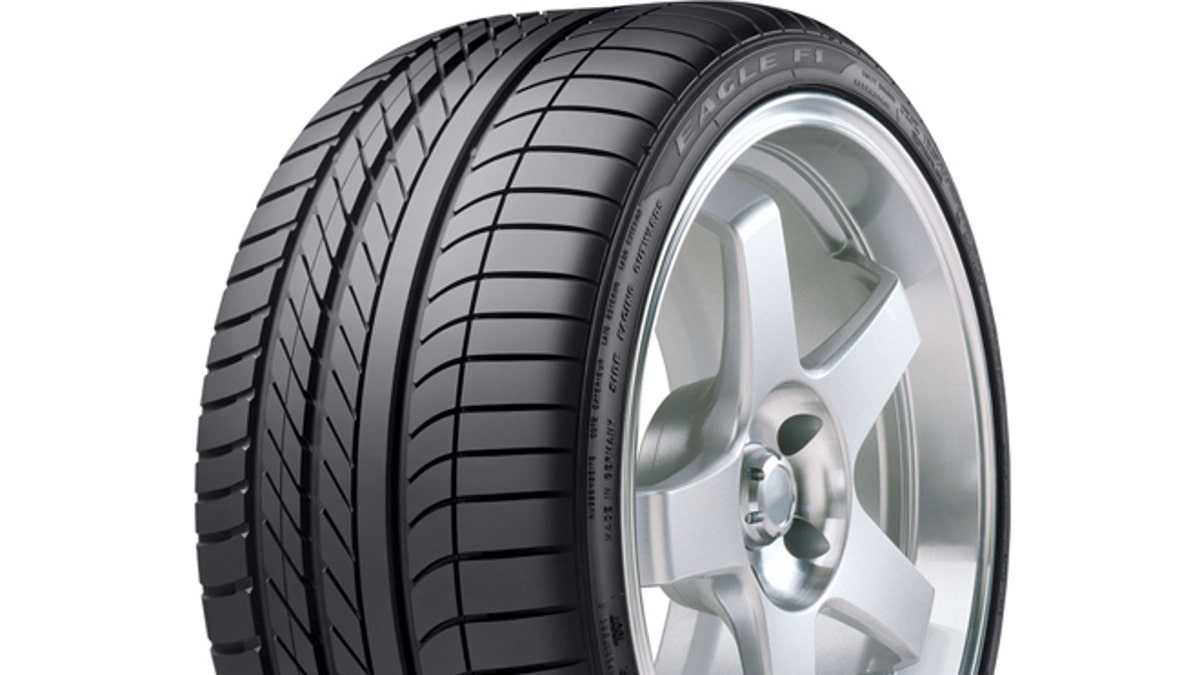
(Goodyear)
You'll find the recommended tire size as well as the speed and load ratings for your vehicle on a placard in the doorjamb, the glove compartment, or on the fuel-filler door. Here's what those cryptic sidewall codes mean for a typical tire:
Size. P235/70R16 is a common one. P denotes passenger-car tire, even though the tire may be designed for light trucks (an LT, or light truck, prefix is for heavy-duty light-truck tires). The number 235 is the cross-section width in millimeters, while 70 is the ratio of sidewall height to cross-section width (70 percent). R means radial-ply construction and 16 is the wheel diameter, in inches.
Load index. This number is based on the weight the tire can safely carry. You'll find it after the tire size; the 104 load index for most of the tires tested for this report correlates to 1,984 pounds. Choose tires with a load index at least as high as the one that's listed on your vehicle's placard.
Speed rating. This letter denotes the maximum sustainable speed and is found directly after the load index. For S-speed-rated tires, it's 112 mph; for T, 118 mph. Speed ratings for other tires include Q, 99 mph; H, 130 mph; V, 149 mph; W, 168 mph; Y, 186 mph; and ZR, more than 149 mph. While such speeds may seem wildly impractical, tires with higher speed ratings tend to provide better handling at legal speed limits. Choose tires that have a speed rating at least as high as the one specified on your vehicle's placard.
More From Consumer Reports
Tread-wear rating. Grades for our light-truck tires ranged from 300 to 540. In theory, a tire graded 500 should last twice as long as one graded 250. But the tire makers certify the tires meet the wear ratings.
Traction and temperature scores. These scores denote a tire's wet-stopping ability and temperature resistance. For traction, AA is best, C is worst. For temperature resistance, scores range from A (best) to C.
Maximum pressure. This is a tire's maximum safe air pressure, given in pounds per square inch. But that doesn't mean you should inflate your tires to that pressure, since automakers typically recommend an inflation pressure well below the tire's maximum air pressure. Follow the advice on the vehicle's placard.
When the tire was made. Every tire has a Department of Transportation (DOT) number following the letters on the sidewall. The last four digits determine the week and year the tire was made; for example, the digits 2211 would signify that the tire was made during the 22nd week of 2011. Don't buy tires more than a couple of years old.
Copyright © 2005-2014 Consumers Union of U.S., Inc. No reproduction, in whole or in part, without written permission. Consumer Reports has no relationship with any advertisers on this site.



















